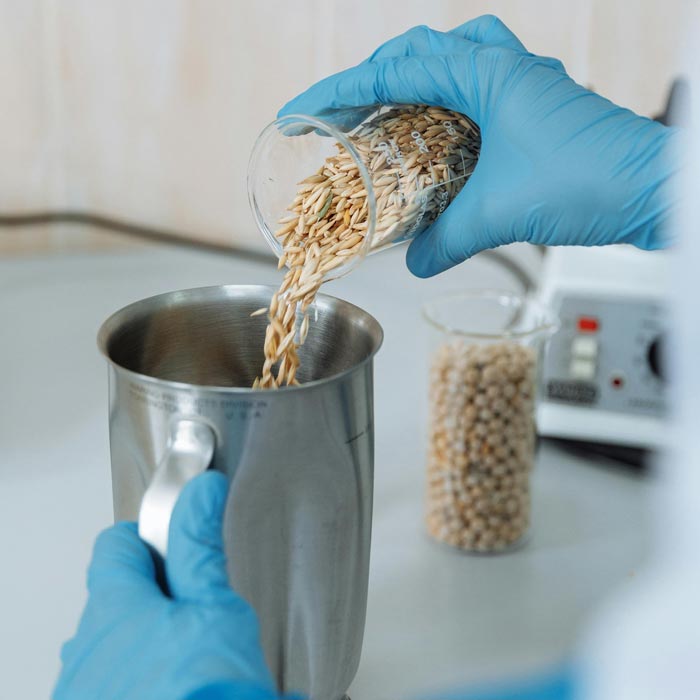Foods to Avoid with IBS: What Not to Eat
Irritable Bowel Syndrome (IBS) can cause abdominal pain, bloating and gas. IBS affects 5-10% of people in the world, or about half a million people.
IBS is complex and can cause a range of symptoms. IBS is not a life-threatening disorder, but it can lead to significant healthcare costs and a reduced quality of living. The Low FODMAP diet is the most effective way to manage IBS symptoms. Research is still ongoing in order to find the best treatment options. probiotics, medications and other methods of managing IBS symptoms may be used.
Takeaways:
- Irritable Bowel Syndrome (IBS) causes altered bowel habits, such as constipation or diarrhea. It can also cause gas, bloating and cramping. It has been proven that eliminating certain foods is an effective treatment method for IBS.
- FODMAPs is a term for fermentable carbohydrates which can cause digestive symptoms.
- Apples, pears and other fruits, vegetables, grains, onions, garlic, wheat, beans as well as asparagus, mushrooms, and more are high FODMAP foods that should be avoided or limited for IBS.
- You can enjoy many low FODMAP healthy foods such as oranges and kiwifruits, lettuce, potatoes, carrots, cucumbers, quinoa seeds, hard cheeses butter oils, eggs and seafood. With a large enough portion, some low FODMAP food can become high FODMAP.
- After 2-6 weeks of limiting high FODMAP food, you can begin a gradual and systematic reintroduction. You can work with a nutritionist to guide you through this phase.
- Experts warn against a low-FODMAP diet for long term use due to the negative effects on microbiota.
What is a low FODMAP Diet?
FODMAPs is a type of carbohydrate – oligo, di, mono, and polyols that are fermented in the colon by gut bacteria. This fermentation leads to abdominal pain, gas, bloating and constipation in IBS sufferers.
Low FODMAP is a diet that limits FODMAPs to a specific level in order reduce symptoms and colonic fermentation. Understanding the acronym FODMAP will help you make better food choices.
F Fermentable gas-producing.
O– Oligosaccharides- A short chain of linked sugars (fructans and galactans).
D – Disaccharides – two linked simple sugars (lactose).
M Monosaccharides (fructose) – One simple sugar.
And.
P (Polyols) – Sugar Alcohols (xylitol – sorbitol – mannitol – isomalt).
| FODMAP | Type of Carbohydrate | High FODMAP Foods |
| Oligosaccharide | Fructans | Wheat, Rye, BarleyGarlicOnion, Leek bulb InulinSome beans (1 cup portions) Some fruits:Banana GrapefruitPomegranate SeedsRaspberry Watermelon Some vegetables:AsparagusBeetrootBrussel sproutsSnow peasExample text |
| Oligosaccharide (oligos, or GOS) | Galactans | Barley BeansLentilsSoybeansSoymilkBeetroot (raw)Butternut squash |
| Disaccharides | Lactose | Cow’s milk and yogurt CreamCustardGoat’s milk |
| Monosaccharides | Fructose | High-fructose corn syrup (HFCS) Sweetened beverages containing HFCSHoney Some fruits:Apples CherriesGrapesMangoPearWatermelon Some vegetables: Artichokes AsparagusMushroomsSnap peas |
| Polyols | Sugar Alcohols – xylitol, sorbitol, mannitol, isomalt | Some fruits: ApplesAvocadoBlackberriesCherriesFigsStone-fruits like peaches, plumsPearWatermelon Some vegetables: Cauliflower Celery (2 stalks)Corn, sweet (1 cob)Snow peas |
What foods are low FODMAP?
The portion sizes of food can influence whether a food is low, medium, or high FODMAP. Below is a list of foods that are low in FODMAPs for standard serving sizes and portions.
Fruits blueberries (1/4 cup), kiwifruit (lemon, limes, oranges/clementines), papayas, pineapples, starfruits, strawberries (5 whole), plantains.
Vegetablesarugula lettuce, bamboo sprouts, bean seeds, pickled beetroot (about 2/3 cup), bell peper, broccoli (only the heads), carrot, cabbage, Swiss chard kale, eggplant, leek, olives potato, radish spinach, sweet potato (1/3 cup), green beans.
Grains Oats, quinoa buckwheat amaranth rice, sourdough, gluten-free bread.
Dairy & Dairy Alternatives –butter (some people may tolerate yogurt as well), hard cheese (lactose free milk), almond milk (some people may also tolerate yogurt), unsweetened Coconut Milk Beverage ( 3/4 cup).
Aromatics – ginger, green onion/scallion/chives.
Sweeteners – Maple syrup, coconut sugar, turbinado, table sugar (sucrose), stevia.
Legumes – garbanzo beans ( 1/4 cup canned), lentils ( 1/4 cup canned), lima beans.
Nuts/Seeds – avocado oil, flaxseeds, sesame, sunflower, sesame, macadamia, flaxseeds, flaxseeds, chia seeds, chia seeds, pumpkin seeds.
Proteins: Seafood, poultry, eggs and red meat. Greek yogurt.
Beverages: water, sparkling waters, tea, coffee and most wines.
Elimination diets are considered to be the best way to identify food triggers that can cause food intolerances, food sensitivities and digestive symptoms. Low FODMAP is an example of such an elimination diet. It includes a 2- to 6-week period of elimination, followed by an 8-12-week phase of slow and deliberate reintroduction. Reintroduction is done one FODMAP and one food per time. Do your research before you start planning your diet. You’ll need to have enough low FODMAP meals and foods available for when you get hungry.
Tracking symptoms will help you identify patterns. It is best to consult a dietitian who specializes in IBS before beginning this method, as the reintroduction stage is complicated and requires guidance.
The Monash University FODMAP App is a great tool for the low FODMAP Diet.
Can I maintain a low FODMAP diet for a long time?
FODMAPs can be fermented by the bacteria in your gut, which helps them thrive. The long-term avoidance FODMAPs can interfere with the healthy balance of your microbiota, which could negatively impact on future digestive health.
As directed by your dietitian, work to include FODMAPs back into your daily diet. You can try again if you’re unsuccessful or unable to tolerate certain FODMAP food groups or groups. It is important to reduce symptoms, but also to increase your dietary flexibility to prevent nutrient deficiency and unhealthful microbiota.
When should you see a doctor?
Schedule an appointment with your doctor to discuss a plan of treatment if you have chronic symptoms that do not respond to a low FODMAP or if symptoms worsen.
IBS can cause uncomfortable and debilitating symptom. Restricting fermentable carbs for a few week’s time can help ease the symptoms and improve quality of life. While a low FODMAP-based diet can feel restrictive, with proper research and planning you can still enjoy a nutritious and satisfying diet. Reintroducing FODMAPs to the diet is essential for gut health.
Resources
- Monash University. Starting the FODMAP Diet.
- IFFGD. The Low FODMAP Diet Approach.
- American College of Gastroenterology. Low-FODMAP Diet.






